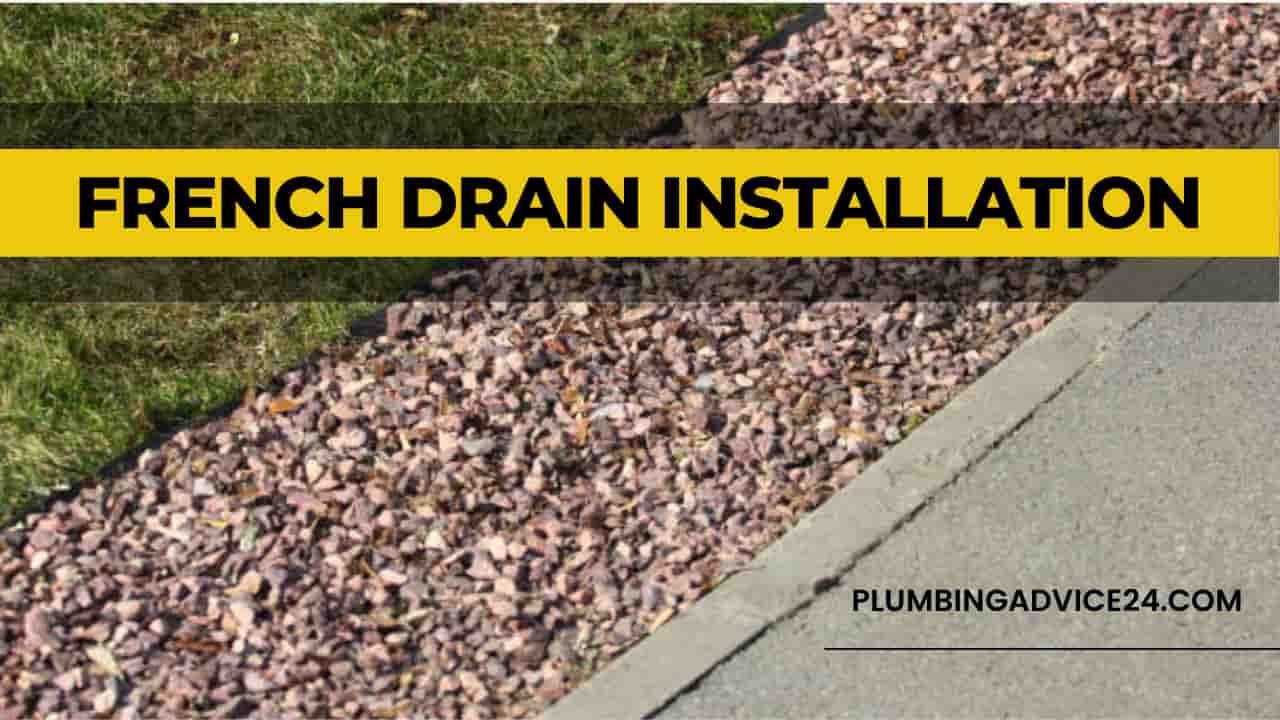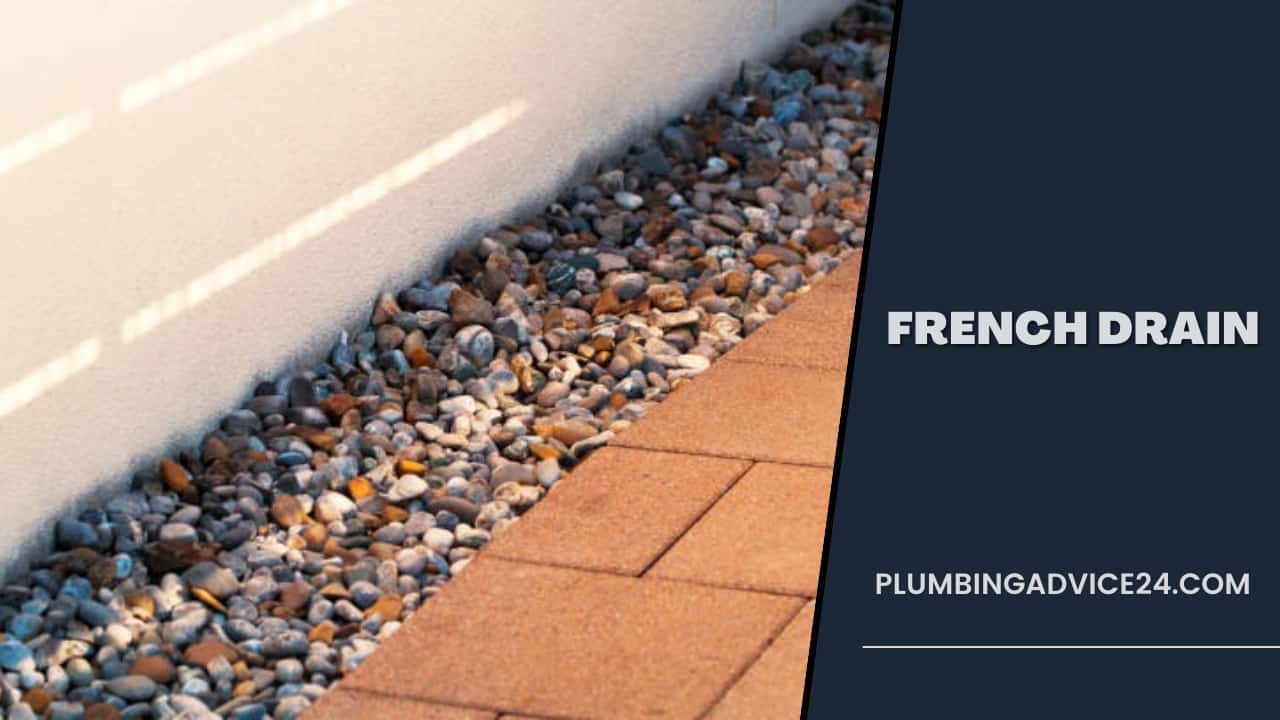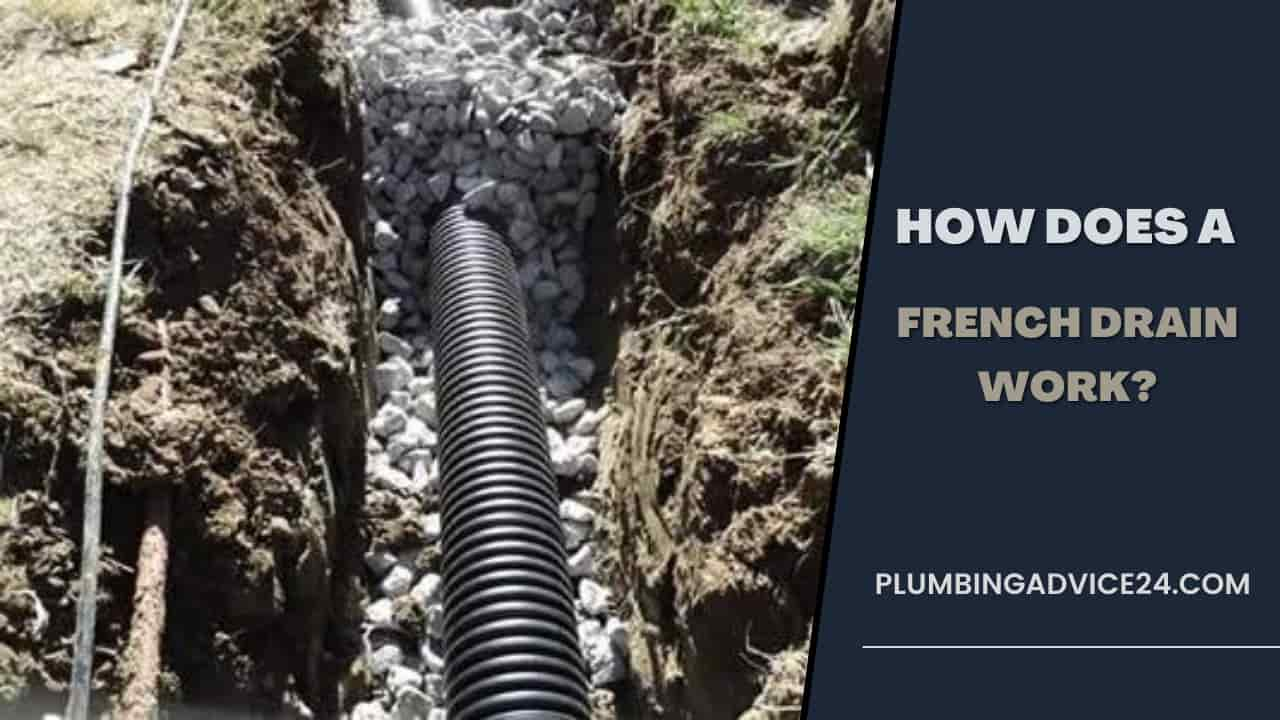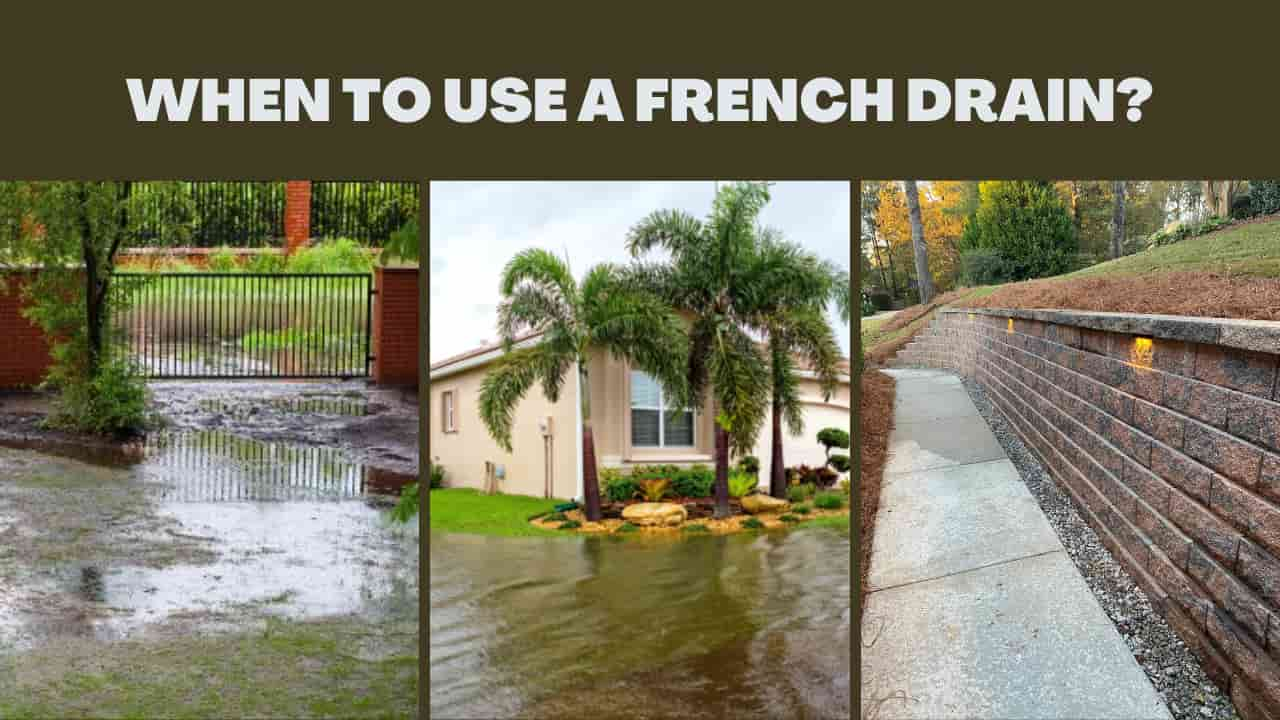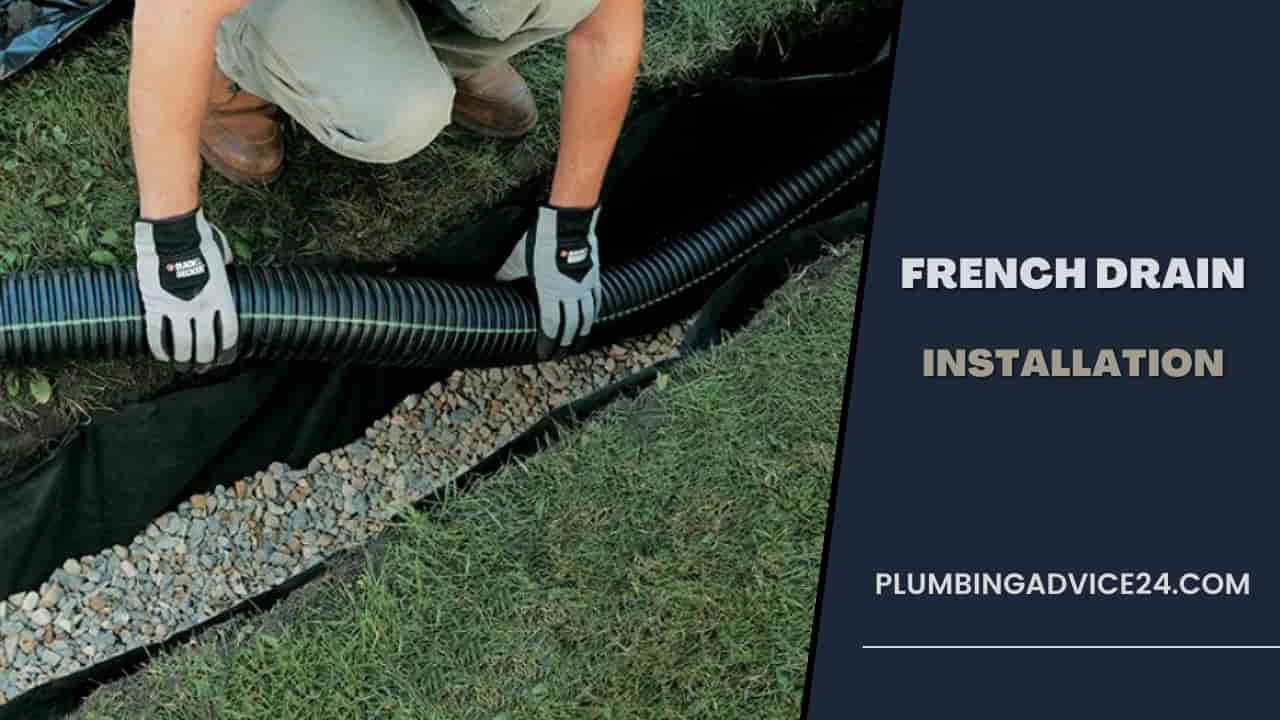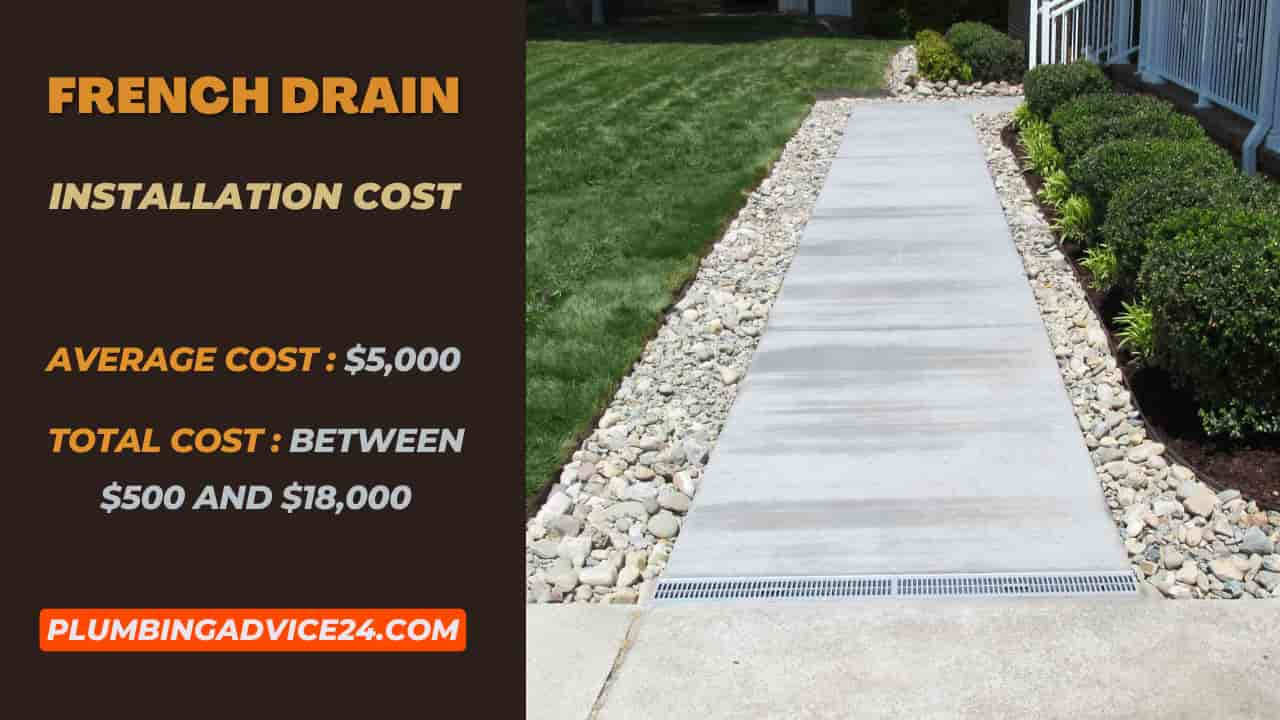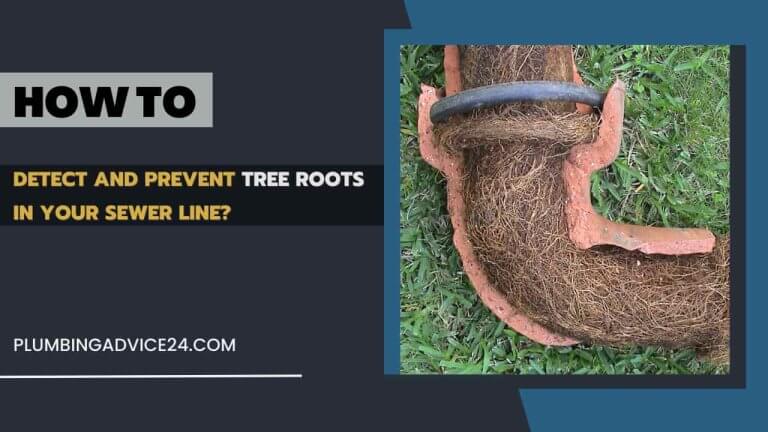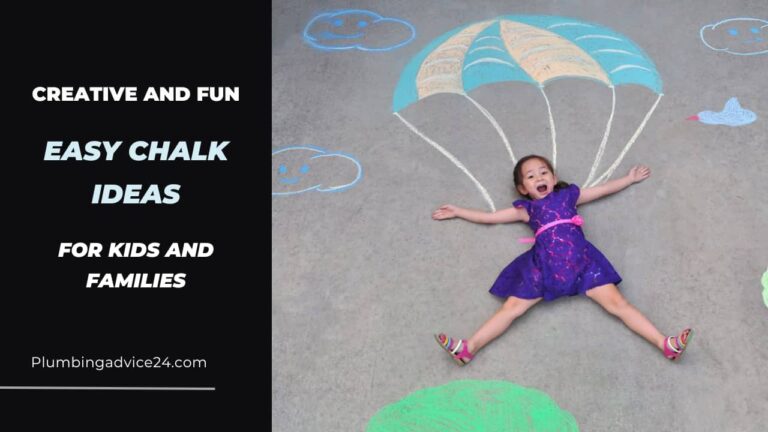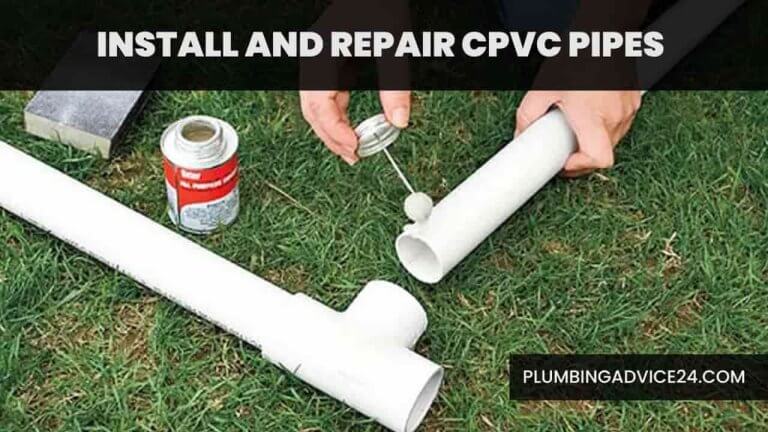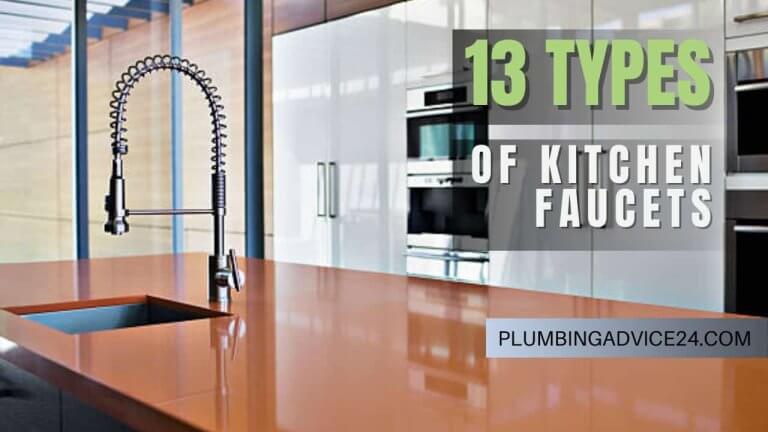French Drain Installation : Related All Information
When you have drainage problems after heavy to moderate rains, french drains are a great option to save your yard. If you find your yard constantly flooded or underwater, this drain system can help keep water away from your home and its foundation. In this chapter, we will cover everything from what a french drain is, what it works does, when it should be used, how to install it, and how much it will cost to install it, which will prove to be very useful to you.
What Is a French Drain?
A French drain is a simple gravel-filled trench dug into the ground in the most problematic areas of the yard, consisting of a perforated or slotted pipe. These drains capture surface water or groundwater and direct it away from a specific area.
French drains are used primarily to prevent ground and surface water from penetrating or damaging building foundations and as an alternative to open ditches or storm drains for streets and highways. French drains can also be used behind retaining walls to relieve groundwater pressure.
How Does a French Drain Work?
French drains are designed to trap surface water and provide a path of least resistance for water to follow instead of flooding. A French drain consists primarily of a gravel-filled trench and some perforated drainage pipes.
A French drain collects water from the surface or wet soil through layers of gravel and works by encouraging it to enter the pipe. It diverts the water to a place where it won’t cause problems, such as a drainage basin or a low-lying area of your property.
Drainage pipes are wrapped in water-permeable fabric to prevent weeds, dirt, and other debris from clogging the holes in the pipe. The pipe is covered in several layers of stones or gravel. Because water passes through gravel more efficiently than soil, once the water mixes with the soil, it can quickly enter the pipe.
When to Use a French Drain?
To help you decide if a French drain will meet your needs, here are some common drainage problems that homeowners face. Read the article below to learn how a French drain can reduce or eliminate these problems.
Surface Water Problem
A homeowner’s most common problem is their wet lawn or driveway that washes away. French drains draw water from saturated soil by providing an easy path for surface water to follow. It is then redirected to a more appropriate drainage location, such as a municipal sewer.
Repeated Flooding and Foundation Damage
During heavy rain storms, water can pool around the home’s foundation and eventually seep into the basement, causing further damage to the basement and the home’s foundation. A weeping tile or internal French drain can be used to avoid this problem. Weeping tiles are a type of exterior French drain that can be installed around the perimeter of a home to draw water away from the foundation.
However, if water is already seeping through the foundation and into the home, investing in an interior French drain may be better. An internal French drain prevents water from entering your basement. It is the surest method of keeping your basement dry and a better option than weeping tile.
Pressure on Retaining Walls
Retaining walls help hold soil in place and prevent erosion, but when the soil becomes oversaturated, this can increase pressure on the retaining walls, causing them to fail. A French drain should be installed at the top of a retaining wall and routed to drain away from the wall, which will draw water from the soil and relieve the pressure.
Related Post : Types of Yard Drains and Their Function
French Drain Installation
When you’re considering a French drain installation, the first thing you should do is check if your municipality requires a permit for the project. Most communities allow French drains. While especially those near wetlands and other sensitive environments—they don’t.
Follow the Steps Below to Install a French Drain:
Plan the Location
First, plan the location of your drain, where the most likely waterlogging problem is. Find an ideal drainage area that directs water away from your home without damaging neighboring property. To work properly, the drain needs to run from high to low elevation. Once you’ve determined the location, mark it with spray paint or flags.
Dig a Trench
Dig a trench in your yard from the spot that needs drainage to your chosen outlet. Your trench should be at least 12 inches wide. Aim for a depth between 18 and 24 inches. The drain should slope at least one inch for every 10 feet of pipe.
Add Gravel
Pour and compact about 3 inches of gravel or rock at the bottom of the trench. Rocks should be coarse and washed before placing inside. Use landscape fabric to line the entire span of the trench above the gravel layer, which will discourage weed growth.
Insert the Drain Pipe
Place the drain pipe over the fabric lining, then add gravel, covering the pipe completely. Leave about 5″ between the top of the gravel and the ground surface. For a more durable system, you can choose an inexpensive, flexible drainage hose, and if you need a curved or long-lasting drain, choose PVC pipe.
Wrap the Pipes and Fill the Trench
Fold extra fabric over the gravel so dirt and roots don’t block the system. Cover the pipe with about 3 inches of gravel or crushed stone, but not enough to go above ground level. Fill the trench with topsoil to completely cover the entire French drainage system. Cover the surface with landscaping stone, if necessary, so your drains can be easily inspected.
French Drain Installation Cost
Installing a French drain can cost you between $500 and $18,000. The average cost to install a french drain is around $5,000. The installation cost depends entirely on the length and depth of the drain.
Additionally, the installation cost can vary depending on whether your French drainage is internal (inside the home’s basement or crawl space) or external (in the yard). An interior drain (which often involves tearing up the concrete basement flooring) can cost an average of $40 to $100 per linear foot, while installation for an exterior drain can range from $10 to $50 per linear foot.
A sump pump may be required along with an internal or external French drain if the water cannot be removed naturally by gravity. The sump pump sits in the sump bucket, and when water from the drain fills the bucket to a pre-determined level, the sump pump turns on and pumps the water to the ground surface. If a sump pump is required, it can add another $150 to $300 to the cost.
Related Post : Types of Drainage Systems for Residential
What Is a French Drain System?
A French drain system is a simple gravel-filled trench dug into the ground in the most problematic areas of the yard, consisting of a perforated or slotted pipe. These drains capture surface water or groundwater and direct it away from a specific area.
What Does a French Drain Do?
A French drain collects water from the surface or wet soil through layers of gravel and works by encouraging it to enter the pipe. It diverts the water to a place where it won’t cause problems, such as a drainage basin or a low-lying area of your property.
What Does a French Drain Look Like?
French drain looks like a rock drainage ditch, and when done well, like a nice hardscaping element. Embedded in that gravel is a drain pipe set at an angle to carry water away from home. You can identify this type of yard drain on your property by finding the exposed end of the pipe on the downward slope.
How Does a French Drain Work in a Basement?
During heavy rain storms, water can pool around the home’s foundation and eventually seep into the basement, causing further damage to the basement and the home’s foundation. French drains can be used to avoid this problem.
French drainage uses a perforated pipe to filter and collects water. From the connection between the wall and the floor, water flows through the wall into your basement, then to the French drainage trench. Some water may come up from under the soil, seep into the gravel and then enter the pipe and away from the house.
How Does a French Drain Work in Yard?
French drains are designed to trap surface water in a yard and provide a path of least resistance for water to follow instead of flooding. French drains collect water from the surface or wet soil through layers of gravel and work by encouraging it to enter the pipe.
It diverts water using gravity to a place where it won’t cause problems, such as a drainage basin or a low-lying area of your property. Drainage pipes are wrapped in water-permeable fabric to prevent weeds, dirt, and other debris from clogging the holes in the pipe.
What Are French Drains Used For?
French drains are primarily used to reduce or eliminate problems such as surface water problems, recurring flooding and damage to a home’s foundation, and pressure on retaining walls.
What Type of Gravel to Use for French Drain?
When installing French drains, the trench is filled with crushed stone-type gravel, which is suitable for drainage. The trench will be sloped downward away from your home and then lead to the street, where the public sewer system can handle excess water.
What Size Gravel to Use for French Drain?
The best gravel for French drains is usually large. They are usually 1/2 inch to 1 inch. The larger the gravel you use, the better the water can flow. Larger gravel also prevents blockages and clogs. If you do not include perforated pipe in your setup, using 1 ½ inches of gravel is best for better drainage.
What Type of Rock to Use for French Drain?
Harder rocks like granite or river gravel are viable options for French drains because they won’t break down over time like other rock types like sandstone and limestone. But you can use white dolomite, northern granite river rock, and pink quartz-type rocks to enhance the beauty of your yard or garden.
How Much Does It Cost to Install a French Drain?
Installing a French drain can cost you between $500 and $18,000. The average cost to install a French drainage system is around $5,000. The cost of installation depends entirely on the length and depth of the drain.
Cost of French Drain Installation in Yard
The cost of French drainage Installation in a yard can range from $10 to $50 per linear foot.
Cost to Install French Drain in Basement
Inside the home’s basement or crawl space (which often involves tearing up the concrete basement flooring) can cost an average of $40 to $100 per linear foot.
Cost to Install Sump Pump and French Drain
Installing a French drain can cost you between $500 and $18,000. If a sump pump is required, it can add another $150 to $300 to the cost. A sump pump is a pump that collects water from the French drain and pumps it out of your home to keep your basement dry.
If You Liked This Post? So Share It with Your Friends
Suggested Articles :
